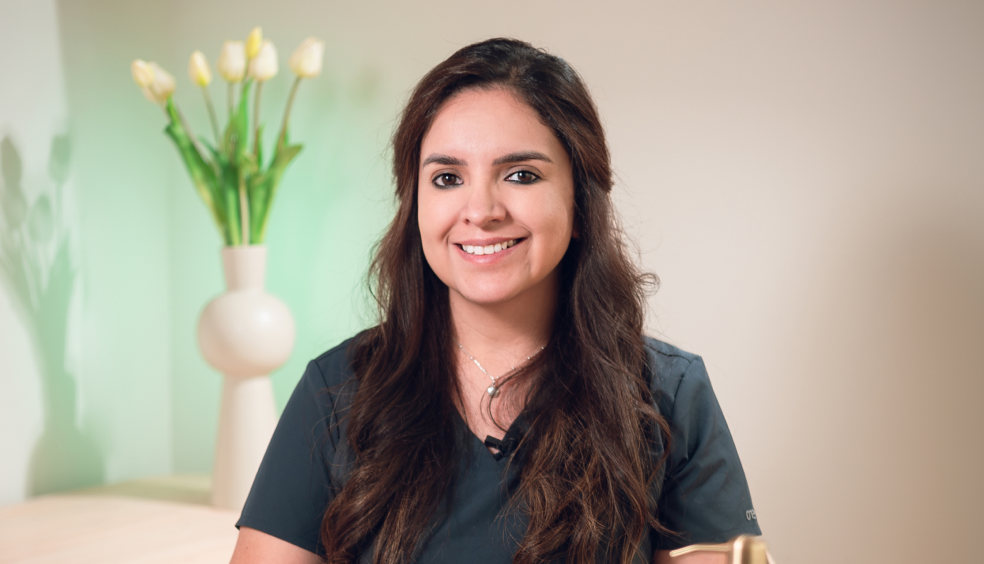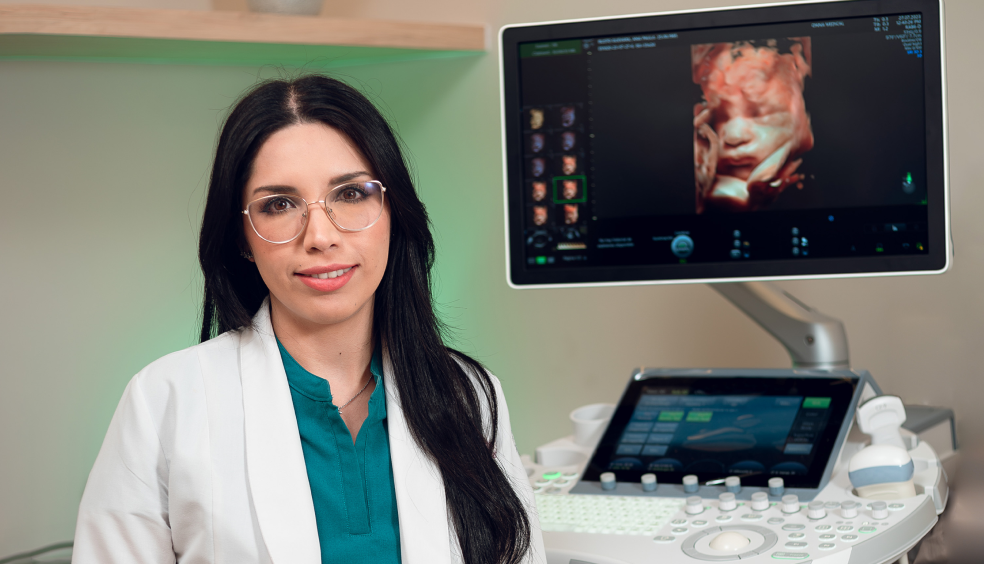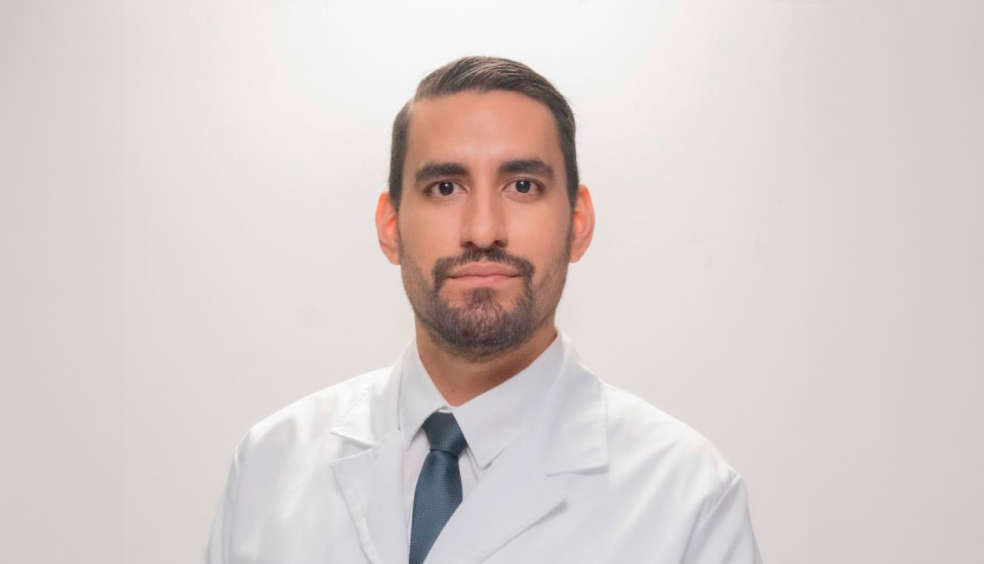3D, 4D, and 5D Ultrasound are ultrasound techniques that allow us to obtain more defined and realistic three-dimensional images of the fetus.
3D ultrasound is a technique that allows us to obtain three-dimensional images of the fetus. While in conventional scanning, ultrasound waves are emitted in a straight line, in 3D fetal scanning, the waves are sent at different angles. This shows a reconstructed image of the volume of the fetus’s surface or its internal organs but without showing movement.
4D ultrasound is similar to 3D ultrasound, with the difference being associated with time: 4D offers a three-dimensional moving image of the baby.
The 5D ultrasound can perform a more defined and realistic reconstruction of the fetus. The new generation of high-resolution ultrasound machines decisively increases diagnostic capacity and the detection of fetal malformations. This technology offers a much more defined and realistic reconstruction of any structure that needs to be observed.
The 3D, 4D, and 5D technology can be used anytime during pregnancy; however, the best images are obtained between weeks 24 and 32, ideally, between weeks 26 and 30. In our center, we advise our patients to come between weeks 28 and 32 to get the best images.
After 32 weeks, the fetus is highly likely to have descended into the pelvis, making it almost impossible to obtain 3D images. Also, as the baby is larger, there is less space, making it more difficult to get a good image.
Some basic measures help us get better baby photos, such as going to the bathroom to urinate to empty the bladder before the study, and not eating immediately before the consultation.
No, ultrasound is completely safe for your pregnancy and for the baby.
In addition to the unique experience of seeing the baby’s face and getting to know them before birth, these ultrasounds place specialists in an optimal position for the diagnosis of externally visible anomalies, such as cleft lip, or internal defects, such as neural tube defects, brain lesions, heart abnormalities, or skeletal system issues in the fetus.
We can identify certain anomalies, such as cleft lips or problems in the limbs, that may not be visible in a traditional ultrasound.
The procedure typically lasts for approximately 15 to 45 minutes.
No, it is not an invasive method. Being an ultrasound study, it poses no risk to your pregnancy or baby. No needles, incisions, or any other type of intervention in the body are required.
No anesthesia is applied for this procedure. It is painless and does not cause discomfort other than a slight sensation of cold caused by the gel.
While we perform the ultrasound, you and your companion can see the baby in real time. During the procedure, our maternal-fetal doctors will explain the findings to you. Within 24 to 48 hours, we will send an official written report with the conclusions and all the images we took of the baby to your email and your doctor’s.

Gynecologist and Obstetrician with a subspecialty in Maternal Fetal Medicine and training in advanced fetal echocardiography.
Certified by the Mexican Council of Specialists in Gynecology and Obstetrics, and the Fetal Medicine Foundation. As an expert in maternal-fetal health, I try to convey to my patients the importance of care and supervision during pregnancy.

Gynecologist and Obstetrician with a subspecialty in Maternal-Fetal Medicine, certified by the Mexican Council of Specialists in Gynecology and Obstetrics and the Fetal Medicine Foundation.
Expert in the monitoring and management of high-risk pregnancies, detection of congenital disabilities, and twin pregnancies.

Gynecologist and Obstetrician with a subspecialty in Maternal Fetal Medicine by the UNAM. Experienced in the management of high risk obstetric and gynecologic pathology.
Certified by the Fetal Medicine Foundation in Cervical Assessment, Preeclampsia Detection and Doppler Ultrasound. Afiliado a la International Society for Prenatal Diagnosis y The Society for Maternal-Fetal Medicine. Affiliated to the International Society for Prenatal Diagnosis and The Society for Maternal-Fetal Medicine.
It is performed between the 11th and 14th week, and with it, we can know how many weeks of pregnancy you have and if there is a risk of Down Syndrome.
It is a blood test that detects two placental hormones; it improves the detection of Down Syndrome, Preeclampsia, and growth restriction.
During the second trimester, we carefully evaluate your baby's organs.
It provides information about the baby's growth, position, and the state of the placenta and amniotic fluid.
Our equipment offers images of greater clarity and resolution, which allows you to get to know your baby on a deeper level.
Allows for the evaluation of the baby's heart development and function, identifying possible heart anomalies and ensuring appropriate monitoring during pregnancy.
It consists of extracting amniotic fluid by means of an ultrasound-guided needle. It is performed after 15 weeks for the prenatal diagnosis of genetic disorders.
It is a procedure in which a small placenta sample is obtained under ultrasound control. It is performed between 10 and 14 weeks to diagnose genetic diseases.
It is a test that evaluates the behavior of your baby's heart and helps us determine if its oxygen supply is adequate.
It allows you to rule out chromosomal alterations in your baby, such as Down syndrome, using a blood sample from the mother.
Helps to relieve pain and discomfort caused by postural changes during pregnancy, improving lumbopelvic mobility, decreasing circulatory problems and maintaining pelvic floor muscle tone.
Improves musculoskeletal structures after pregnancy, provides lymphatic drainage and treatment for soft tissues and scars, facilitating a healthy and safe recovery.
Personalized nutrition plan to enhance chances of successful pregnancy. Custom strategies for couples diagnosed with infertility. Includes comprehensive assessment, tailored recommendations, and ongoing support.
Stage-specific nutritional strategies throughout pregnancy, with progress monitoring and customized recommendations based on each patient's individual needs.
Professional guidance for successful breastfeeding. Includes nursing techniques, solutions for common challenges, and nutritional recommendations during the lactation period.

Av. Paseo de la Reforma 2654, Quadrata Tower, 14th Floor, Office 1401, Lomas Altas, Miguel Hidalgo, CP 11950, Mexico City.
.
WhatsApp: +52 55 2248 8874
Manacar Shopping Center, Av. Insurgentes Centro 1457, Basement 1, Onna Unit, Mixcoac, Benito Juárez, CP 03920, Mexico City.
WhatsApp: +52 55 7473 7747